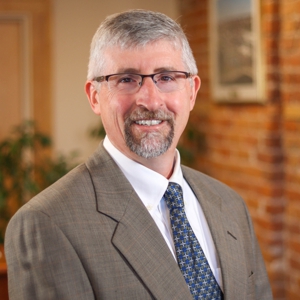Vermont is a beautiful, mostly rural state with many small, picturesque villages that predominantly use on-site septic systems for wastewater disposal. Village homes and businesses were built on small land parcels and poor soils that do not “perc” well. The on-site septic systems were typically designed and constructed 50-100 years ago and do not meet current standards needed to protect the environment and public health. The poor soils and small parcels make replacement on-site septic systems that meet current environmental and public health standards impossible. Further, poorly performing on-site septic systems can contaminate private water supply wells, streams, and rivers, threatening public health. These malfunctioning systems do not allow property use expansion like adding an accessory apartment, or other new housing, expanding a country store to prepare meals or building a new or expanding an existing business. Current and future village vitality requires functioning wastewater management.
Existing poorly functioning Village on-site septic systems is a complicated problem to solve. Connecting these rural villages to a conventional centralized Water Resource Recovery Facility is not practical due to the great distances (5-10 miles or more). Constructing a new “stream discharge” conventional Water Resource Recovery Facility to serve these small Villages is not economically feasible or permittable. With few other practical wastewater management solutions to replace these worn-out systems, the State of Vermont has launched a program to replace poorly performing on-site systems in these villages with Town-owned decentralized wastewater management systems. Vermont has formed an interagency Village Wastewater Initiative Committee (VWIC) led by the Department of Environmental Conservation (DEC) to help implement and finance these projects.
Decentralized wastewater management systems typically include replacing older on-site septic tanks and piping the discharge to a common Water Resource Recovery Facility (WRRF), discharging to a soil-based disposal system. Hoyle Tanner is currently engineering these village projects in two communities – Montgomery and Greensboro. The Montgomery projects serve two separate areas of town; the “Village” and the “Center” are proceeding with final design. The Greensboro project is in the Preliminary Engineering phase. These projects are fully funded through state and federal grants with no local funding requirement so far.
Case Study: Montgomery
The Montgomery projects are designed to serve approximately 100 residential and commercial users in the Center and 70 in the Village. Each system will consist of septic tank replacements and sewer collection piping, conveying the tank discharge to one or more community pumping stations. The wastewater will be pumped to a WRRF for treatment prior to indirect discharge. The WRRF treatment process will include influent equalization storage, biological treatment and filtering – the latter two steps provided by a “Secondary +” treatment system designed to produce a monthly average effluent water quality of 15-mg/L BOD5 and 15 mg/L TSS to meet the Vermont Indirect Discharge Rule requirements. The treated effluent will be distributed with a drip disposal system buried about 18″ below grade for infiltration into the ground. The discharge sites for both systems have received extensive hydrogeologic and environmental evaluation as prescribed by the Indirect Discharge Rules.
The Greensboro project is in the preliminary, pre-design phase intended to serve users in Greensboro Village. Project parameters such as design flows, number of users served, level of treatment required, and discharge site capacities are currently being refined.
After these Town-owned decentralized wastewater management systems are constructed, property owners will not need to worry about failing septic systems or private water supply well contamination. During property sales, they will be able to demonstrate to lending institutions that the property has a functioning wastewater management system. Village property owners will have adequate wastewater capacity for the future to add an accessory apartment, or other new housing, expand a country store to prepare meals or build a new or expand an existing business.
The Vermont Village Wastewater Initiative is a high visibility, well-funded program by the state as illustrated by Secretary Julie Moore of the Vermont Agency of Natural Resources in 2021:
“More than 150 Vermont downtowns and village centers are without a public wastewater system, which limits economic growth…Let us support the people living in our villages and towns by standing with their vision and their tangible plans for the future, many of which rest upon village wastewater infrastructure investments.”
These decentralized wastewater projects require engineering, hydrogeology, environmental permitting, municipal financing, archeology and legal expertise. Hoyle Tanner is proud to be actively engaged in this crucial program, offering our expertise and leadership to ensure project success. If your community is facing wastewater concerns, please reach out to me.
*It’s Hoyle Tanner’s 50th anniversary this year! Keep an eye on our Facebook, LinkedIn, and Twitter feeds for articles and anniversary news!










